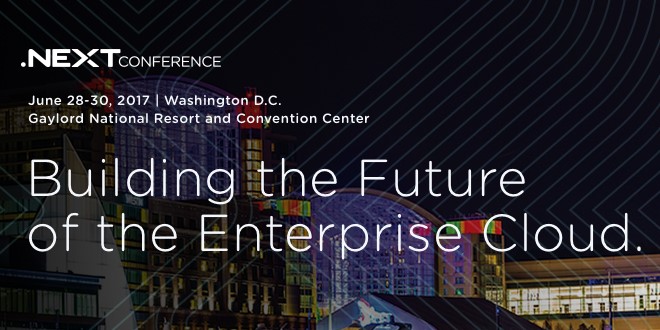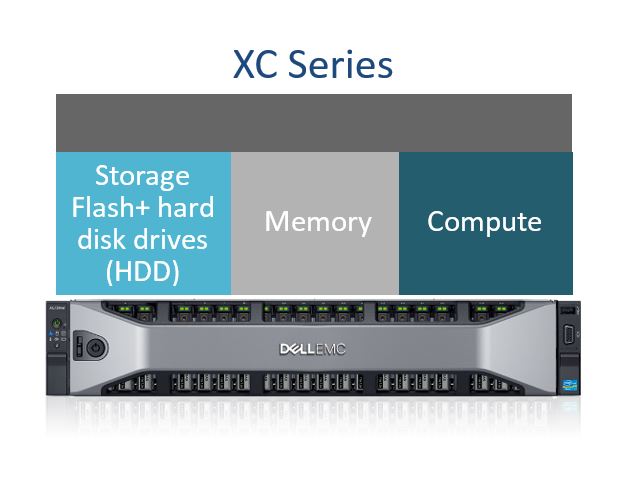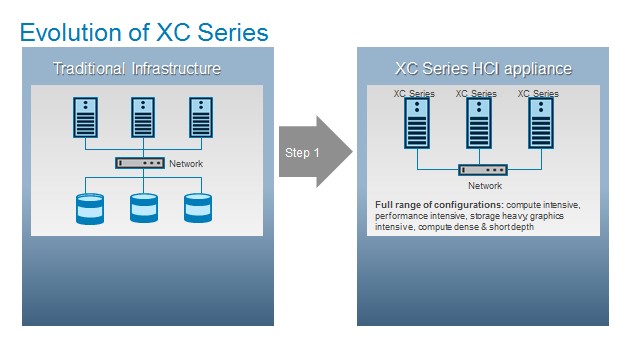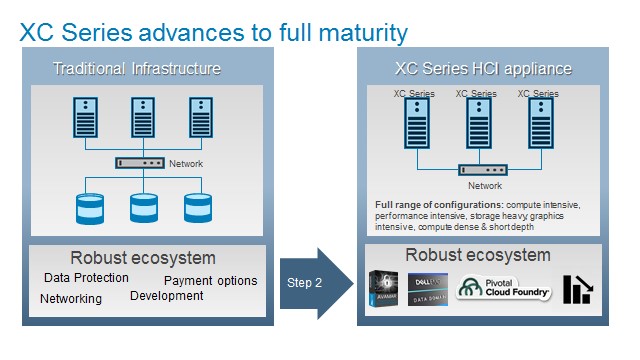The only thing harder to achieve than striking a balance, is maintaining it. Hyper-converged infrastructure (HCI) is defined by the ability to unify compute and storage over a high-speed network residing in the same appliance. That approach not only makes it simpler to manage IT by employing appliances; it makes it easier to scale systems out over time to meet demand for increased compute and storage resources as needed across all our Dell EMC XC Series and VxRail appliances.
While software drives more and more features in the HCI environment, the single biggest misconception is that somehow this is completely independent of the underlying hardware. Via hard-won experience within the Converged Platforms and Solutions Division (CPSD) of Dell EMC, we know nothing could be further from the truth; a fact we plan to showcase conclusively later this month at the .NEXT 2017 conference being hosted by Nutanix in Washington, D.C.

The Unique Dell EMC Advantage
Vendors that take a “software-only” approach to HCI are relying on general purpose servers that have been designed primarily for compute. The challenge is that, when it comes to optimizing HCI deployments, the storage subsystem also needs to be designed for performance and reliability. Scale-out solutions require data to be distributed across autonomous drives that provide consistent levels of cache performance. Creating a server design that embraces this need and selecting the right drives ensures performance and reliability. In contrast, the typical industry general-purpose server is designed to optimize the highest average level of performance available for compute. In fact, when it comes to HCI capabilities, not all servers are created equal; a fact we’ll see when we deliver our next-generation 14G servers later this year.
Traditional storage relies on storage controllers to handle misbehaving storage hardware and firmware. A storage controller can comprehend over 3,000 status and error codes generated by drives from any number of vendors. In addition, there are diagnostic tools for predicting and resolving failures. Dell EMC has over 8 years of experience with storage appliances based on x86. Expertise gained is built into our HCI offerings through co-engineering with our hardware and software teams and with our partners like Nutanix and Microsoft resulting in an easy to deploy, use and manage HCI experience. Having these kinds of capabilities is nothing less than critical in an enterprise IT environment.
Why XC Series?
Over the years, Dell EMC has developed a suite of unique software tools that augment Nutanix management software and enhance the ease of HCI management and lifecycle. These built-in tools enable a fast and near seamless deployment experience, provide rapid factory restore and bare metal recovery methods, augment rich in-band hardware monitoring and management capabilities and enhance workflow orchestration across a cluster. We also leverage these tools to pre-deploy the software stack and pre-configure, for example, BIOS and iDRAC settings in Dell EMC factories. This allows us to provide our customers with a fully installed system, complete with the hypervisor of choice running on an appliance tuned for individual workloads. We even integrate our first-time boot scripts with Nutanix’s deployment tools to enable a smooth deployment experience.
When it comes time to configure an HCI appliance, it’s also important to remember that not all application workloads are created equal. Workloads such as Microsoft Exchange and SharePoint often are served best when optimized for storage density using 3.5-in high capacity drives. In contrast, more compute intensive workloads involving virtual desktop infrastructure (VDI) and general server virtualization require less capacity. As a result, they typically need to be optimized for compute density. Because of those different application workload requirements, Dell EMC offers seven different configurable platforms across the XC Series.
 Nutanix, a leading provider of HCI software, recognizes the critical importance of the underlying HCI hardware. Dell EMC co-engineered the XC Series with Nutanix to ensure that components selected meet strict performance and reliability requirements. System BIOS and management settings have been optimized for the Nutanix software stack and each pre-integrated implementation is validated by both companies. That same level of performance and reliability can’t be achieved using off the shelf x86 servers and flash drives.
Nutanix, a leading provider of HCI software, recognizes the critical importance of the underlying HCI hardware. Dell EMC co-engineered the XC Series with Nutanix to ensure that components selected meet strict performance and reliability requirements. System BIOS and management settings have been optimized for the Nutanix software stack and each pre-integrated implementation is validated by both companies. That same level of performance and reliability can’t be achieved using off the shelf x86 servers and flash drives.
More Tools, More Partners…More Choices
Earlier this month, we introduced a new network validation tool for those customers who are adding XC Series to their existing environment so that their network is configured and ready prior to deployment. We are also integrating the monitoring of the XC Series into the Open Manage Essentials portfolio of tools we provide so customers can now monitor their HCI infrastructure with the same systems management tools they use to manage PowerEdge Servers.
In May, XC Series expanded its ecosystem with the first phase of Data Protection—Dell EMC Avamar Virtual Edition, Data Domain and Data Domain Virtual Edition with a reference architecture—plus enhanced developer choices with a configuration and deployment guide for Pivotal Cloud Foundry. In addition, our partnership with Microsoft has driven more seamless integration of XC Series with the Microsoft Azure cloud to provide data protection capabilities as well as worry-free business continuity.


At Dell EMC we believe in building and fostering strong partnerships. A stronger ecosystem gives our customers more choice and confidence in moving ahead with their IT and digital transformation initiatives. We continue to collaborate and innovate together with Nutanix on the XC Series to make further advances that target additional workloads and efficiencies for our customers.
Spanning over 1,100 customers, over 12,000 nodes and over 45 countries, the XC Series has proven that this approach works. We’re now on the second generation of the XC Series using 13G PowerEdge servers with a third generation (14G) in the coming months. Make sure to stop by the Dell EMC booth P2 at .NEXT to experience the XC Series both virtually in our VR experience as well as physically with the actual appliance. You can hear from our guest speakers Chad Sakac, President, CPSD and Dan McConnell, VP, XC Series discuss the importance of open platforms and the expanding XC Series ecosystem. Also, make sure to join our CONVERGED user group See you there!